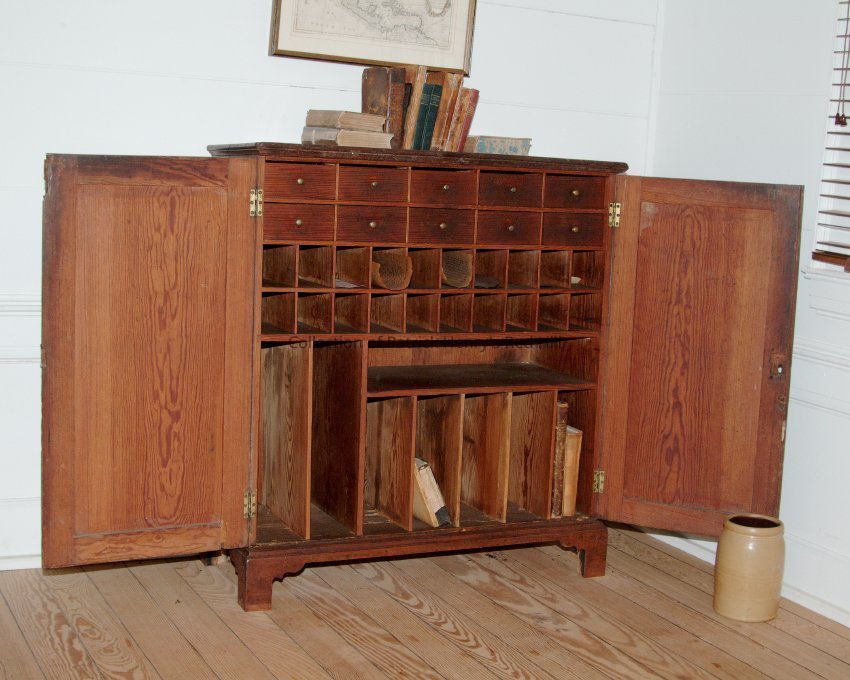Notes
This burly heart pine ledger cabinet belonged to Patrick Henry. It would have held important documents such as letters, deeds, land grants, maps, account books, and possibly other large volumes such as law books.
Although the written provenance for this piece only goes back to the mid-20th century, one of the upper drawers provides considerable evidence of Patrick Henry's ownership. The top, left-most drawer (inscribed I on the inside, back box) is carved with the name "Col. W. Anderson". Entries for "Colonel Anderson" appear in several of Henry's account ledgers.
The cabinet was donated to the PHMF in 1975 by James Garrard of South Boston, Virginia. The object file states the cabinet was purchased from Mr. Garrard's antique shop by Mabel O. Bellwood, PHMF curator. Later correspondence with Mr. Garrard showed that he actually donated the desk to the foundation.
Mr. Garrard purchased the cabinet from Samuel Cleveland Mason (1885–1963), a resident of Brookneal who specialized in refinished furniture. Mr. Mason had purchased the cabinet as a Henry piece at a sale. Mr. Garrard could not remember the details of the sale, making the provenance of this piece difficult to uncover before it came into Mr. Mason's hands.
It is possible Mr. Mason purchased the cabinet in the 1940s or 1950s. According to PHMF Curator Edith Poindexter, several Henry family pieces came to market when the home at Seven Islands plantation was being sold at that time.
In 1992 Russell Bernabo, a consultant with Sumpter Priddy III, Inc., evaluated the cabinet, then unrestored. He said, "The pine ledger cabinet is a wonderful survival from the eighteenth century piedmont."
